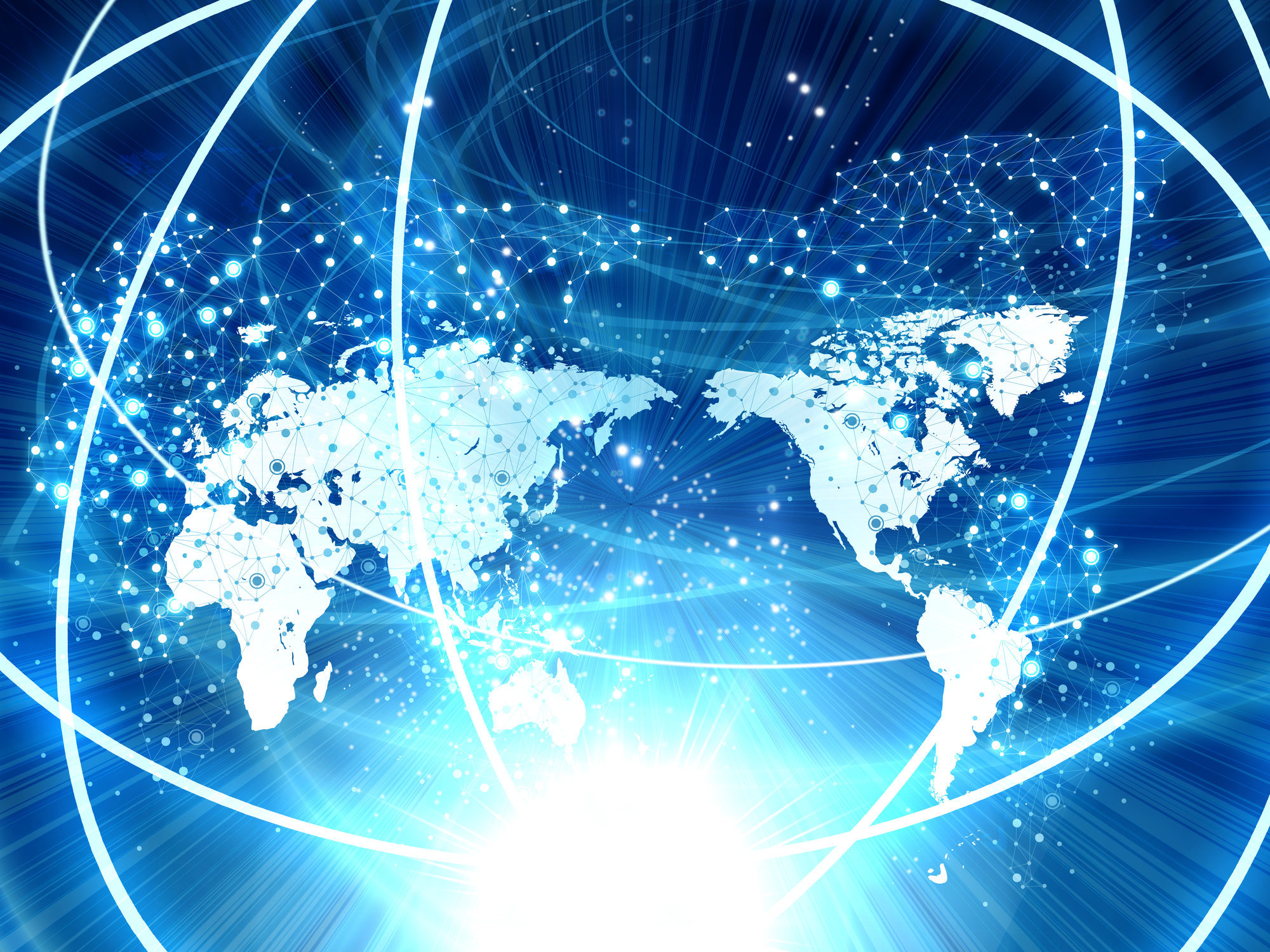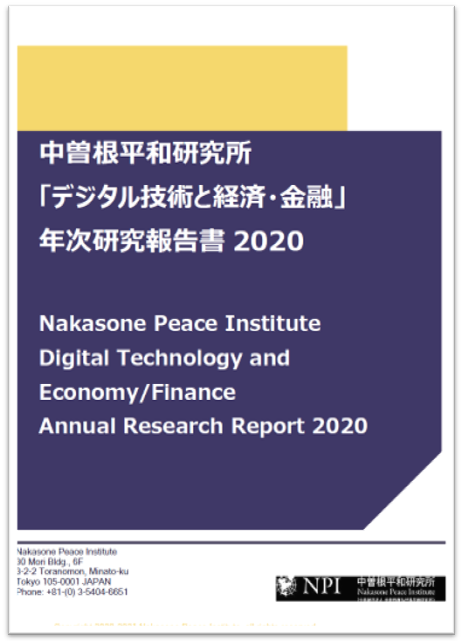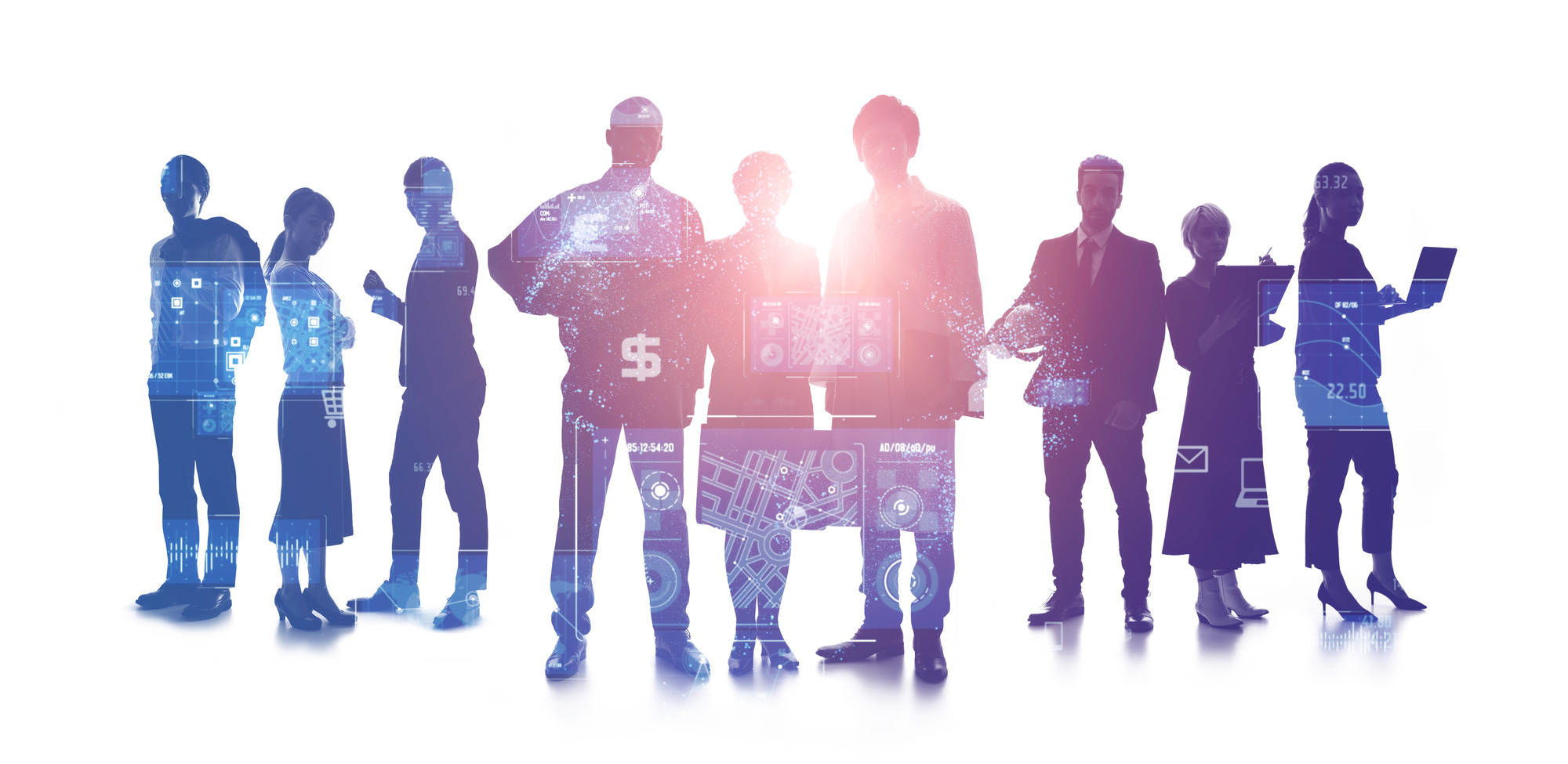2020/07/13
"Big Tech and Finance - China and US/Europe" ("Digital Technology and Economy/Finance" Study Group)
The Nakasone Peace Institute held the web conference on "Big Tech and Finance - China and US/Europe" with Mr. Toshihiko Okano (Senior Specialist, NTT Data Institute of Management Consulting), Mr. Yuichi Iwata (Senior Research Fellow, Nakasone Peace Institute) and other regular members, on June 30th 2020.
1 Presentation "Digital Platformer (Big Tech) and Finance -China-" (Mr. Okano)
■Chinese Big Tech has grown through "solving matching problems"
From the late 1990s to the early 2010s, China's digital platformers (Big Tech companies), such as Alibaba and Tencent, have grown through "solving matching problems between goods sellers and goods buyers.
For example, as the main player of EC (electronic commerce), Alibaba has been taking measures to improve the various concerns and situations, such as payment methods called Alipay, financial functions for SMEs, logistics infrastructure, and cloud computing as a technical platform. They all together provide both the integrated and comprehensive business infrastructure and business opportunities at low transaction costs.
Especially financial functions, both Alibaba and Tencent are effectively using them to build business ecosystems. Alibaba has made better cash flow among individuals and SMEs (Small and Medium Enterprises), by continuously improving the credit scoring systems based on watching transaction flows and cash flows. Tencent, of which major business is SNS (Social Network Services) called WeChat and QQ, has shaped the business infrastructure by "fusion of the Internet and the real world" mainly through tie-ups with real-life service providers. Among them, the payment function WeChat Pay and cooperation with traditional financial institutions play a major role.
■O2O (Online to Offline), the origin of the "Corona Tech"
O2O, as a "fusion of the Internet and the real world", is a major feature of China's digitization compared to the United States. And this is the origin of "Corona Tech," which contributed to the suppression of COVID-19.
"Made-in-China 2025" and "Internet Plus" both issued in 2015 will try to combine the rapidly growing Internet services with traditional industries that remain inefficient, in order to improve corporate efficiency and industrial restructuring. Especially, restructuring the Financial sector is of great importance, and the above example of Tencent's collaboration with traditional financial institutions can be explained in this context.
■China's internal politics of how to handle digital platformers (Big Techs)
As the digital platformers increase their economic influence, how to deal with them in the future is a matter of controversy in China. Mobile electronic payments have been innovating while competing with major private companies (Alibaba, Tencent, UnionPay). Even in the service industry policies such as aviation and telecommunications, after the market was formed, there was a movement to normalize the excess, and finally, there were about three strong companies, voluntarily building national infrastructure and international projects. This kind of trend seems to be a characteristic of China's industrial policy.
However, as Big Techs, when they grow and their influence on the economy and society becomes stronger, they have a dilemma that the control and regulation by the government become stronger. One of the factors China has been able to take the lead in preventing the spread of COVID-19 infections is that there is a feature that individuals are authenticated on the digital platform by the real-name system. With the addition of image recognition, voice recognition, etc., individuals were identified in various scenes, and cooperation including administrative services became possible. This was a very important element in emergency measures to prevent infection and restart the economy, such as "visualizing the health status of each citizen with red, yellow, and blue, and limiting their actions."
The government-led activities might be scaled up as the construction of digital infrastructure continues. The Digital Yuan, which the government is trying to promote, might be effectively a competitive one with Alipay and WeChat pay. Under such circumstances, how to maintain the competitiveness of Chinese Big Tech and how China's digitization is growing soundly to maintain overall China's competitiveness will be the key points.
2Presentation "Cloud services, Big Techs, and Finance" (Mr. Iwata)
■The Geopolitics of cloud services: America in the middle of the global map, Europe in the right, Asia in the left
In the global network map of cloud service providers, the United States is centered and connects to Europe in the east and Asia in the west. (Example: https://blog.doit-intl.com/the-truth-behind-google-cloud-egress-traffic-6e8f57b5c2f8) This is because the Internet originated in the United States, and the two most popular and important information mainstream is also between the United States and Europe, and between the US and Asia. Therefore, big cloud service providers also connect the Atlantic Ocean and the Pacific Ocean with many large-capacity submarine cables, provide large data centers and connection points near major cities in the United States, Europe, and Asia to provide services to the whole world.
For Chinese Big Tech, submarine cables are mainly landed from around Hong Kong and are connected to China mainland. China is something on the edge of the Internet world centered on the United States because the main international undersea cables are from the US to Singapore and India. When it comes to using China's digital platform services around the world, it is necessary to consider how to connect them from the left of the global map to the middle and the right end, with thick undersea cables.
The cloud service mechanism is here (e.g.: https://ecl.ntt.com/documents/quick-start-guide/rsts/pattern_4/model_c_cent_SV.html). Its major features are (1) Firewall, and Load Balancer, to handle appropriately so much data including suspicious one, and (2) to set up servers suitable for each application, such as the Web and accounting system, and distribute data optimally to each specific server. It can be said that cloud services are huge systems in which these two mechanisms are horizontally connected seamlessly all over the world.
■Big Tech influence and Financial Business
Looking at enterprise value-based Big Tech ranking for 2018 (https://www.visualcapitalist.com/visualizing-worlds-20-largest-tech-giants/), Apple, Amazon, Google, Microsoft, and Facebook are top 5, followed by China's Alibaba and Tencent. On the top 20 bases, in 2018, only US and Chinese companies are there, while in 2013, four companies from Japan, South Korea, and Russia were also there.
Regarding Big Tech in the US, Google and Apple, in particular, provide various services on the same platform, very similar to Alibaba and Tencent. Amazon, like Alibaba, started from the EC site, but now it has also the world's number one cloud service provider named AWS (Amazon Web Services), and also has some financial functions including payments. Facebook, started with a business model of connecting friends like Tencent, became famous for the idea of cryptocurrency Libra last year.
From the viewpoint of financial business on Big Tech, Google and Facebook are focusing on such payment methods so far. Meanwhile, Apple and Amazon are also offering insurance and credit lending. Besides, like Tencent in China, there are so many flexible collaborations with traditional financial players. (https://www.fxcintel.com/research/analysis/how-big-tech-could-change-the-cross-border-payments-industry)
■Big Tech and Geopolitics
Lastly, the recent two keynotes on Big Tech and Geopolitics come here.
The one is from the famous internet magazine Wired. (https://www.wired.co.uk/article/big-tech-geopolitics)
The title is "Big tech is now a geopolitical force - and that should worry us all," which shows the Big-Tech-related geopolitical concerns on global digital currency, diffusion of propaganda by militants, use of tax havens, political violence against minorities, and lobbying for US and European governments. It has also worried about the possibility of the global battle over the domination of AI and the supremacy of quantum, which could make the world less flat and less connected.
The other is from the Brookings Institute. (https://www.brookings.edu/blog/order-from-chaos/2019/07/31/from-the-iphone-to-huawei-the-new -geopolitics-of-technology/)
The title is "From the iPhone to Huawei: The new geopolitics of technology", which indicates the importance of determining ownership of personal data, which could affect the future of the world economy and geopolitics. It shows there are three ways of ownership style in the world: (1) Personal Data retention by Big Tech (US), (2) Citizenship and consumer rights priority to personal data (Europe), (3) the government has more access to personal data under the state-supported technology competition (China), the difference of which could bring the retreat of globalization.
3 Discussion
■Main issue 1: Is China a threat or cooperating in "digital"?
○At the corporate level, it might be soon necessary to judge whether private companies will ride on the China-made digital infrastructure or they will compete on their own-made digital infrastructure.
○ There are opportunities for Japan. In the case of mission-critical operation which also affects human lives, China needs the operation knowledge and will ask Japan to help. Besides, it is also an issue that the development of the middle management of the organization that supports stable corporate business continuously.
○ Japanese companies have been making good use of "field power" (Genba-Ryoku) to create business processes in the manufacturing and service industries, which is what China would like to ask Japan. On the other hand, as for "experimentation of digitalizing business and services", China will have an attractive environment for Japanese companies.
○In such a case, the important thing is "power management", in continuously considering of mutual benefit.
■Main issue 2: China's "geopolitical" strategies and its responses in "digital"
○ China's influence will spread considerably, especially in Southeast Asia.
○The submarine cable network connecting China and Europe is consistent with the Belt and Road strategy, however, its usage will depend on the business decision of the leading telecommunications carrier at each landing site country.
○ When looking at China's external movements, there might be TWO China aspects: "Strong China" which aims to realize a "moderately affluent life " with the support of the people by maintaining economic development, employment, and social order. It is necessary to keep in mind that such balance adjustment in domestic politics is often the background.
■Main issue 3: Response of each country sandwiched between the US and China on "digital"
○ In Europe, their own and unique digital platform is weak, and telecommunications carriers have been also reducing their R&D functions. On the other hand, there are many activities undertaken by the EU and the European governments, and there are many industry-academia collaborations especially in Germany. In general, the direction of Europe in "digital strategy" is how the EU and governments of each country will establish a position in cooperation with their private sector and/or academia.
■Main Issue 4: "Digital Platformer (Big Tech)" and "Financial Regulation"
○ Big Tech seems to be designing a service system that takes into account the possibility of conflict with financial regulations in each country. (Especially for the Chinese Big Tech, this point can be a hurdle in making a full-scale entry into other countries' market.)
○ In China, the real-name system has been thoroughly enforced to strengthen the movement to control the flow of information and money. Besides, financial stability (foreign exchange, bankruptcy avoidance, capital flight prevention, etc.) is a very important issue for the government and the Central Bank.
■Main Issue 5: Regarding the intention of the Japanese government to support 5G/after 5G, NHK reported on June 29th.
<https://www3.nhk.or.jp/news/html/20200629/k10012487291000.html>
○ Japan's information and telecommunications R&D (Research & Development) have fallen behind because there might be some pressure on short-term profits and achievements due to shortening the issuance interval of financial reports (from half-yearly to quarterly) in the first half of the 2000s. It might be disadvantageous for long-term product and service development, and have reduced motivation and resource allocation for R&D.
○ Even if the government support is to come, if they achieve the target in a relatively short time (e.g. 5 years), we might fall into the same bottleneck. A medium to long-term perspective is necessary.
○ In addition to a medium to long-term perspective, it is also important to have a pooling system of excellent human technical resources as a group for future technological development.
○ Big Tech in the United States and China has invested R&D funds of 1 trillion yen per year for many years and has been recruiting high-spec technical personnel. Therefore, it is not a story of catching up easily overnight
○ However, optimistically speaking, there is also the expectation that if R&D is switched to a long-term perspective and takes a certain amount of time to endure, some good achievements can be done.
○ The Japanese government has spent less on R&D compared to the United States and other developed countries' governments. In that sense, it may be difficult for foreign countries to point out that Japan is particularly unfair among WTO discussion if gearing up the government R&D expenditure to ICT. Rather, it might be necessary to take the direction of appropriately adjusting its expenditure level to the standards of other countries.





